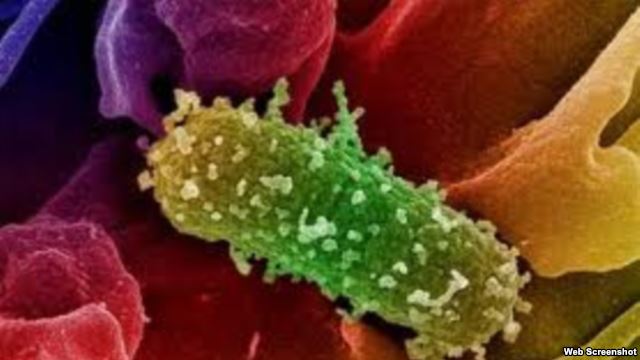Implementation of an educational strategy to face cholera in Doctors' Offices
Keywords:
Cholera, Health education.Abstract
Introduction: cholera is an acute form of diarrhea caused by a bacterium found in water, of rapid spreading in emergency situations; which it is characterized by signs and symptoms of acute evolution and high mortality rates.
Objective: to assess the effectiveness of an educational strategy applied to families belonging to the Doctor’s Offices of Pedro Borras Astorga University Polyclinic, Pinar del Rio municipality
Method: a descriptive and cross sectional research was conducted in health care systems and services at No-1 and No-2 Doctor’s Offices from October 2014 to June 2015. The target group was comprised of 289 inhabitants assigned to medical students during their stay in Public Health subject, the intentional sample included people older than 15 years old (244), who complied with the requisites for the study. The research was conducted in two stages, an initial one for the identification of knowledge needs about cholera, and a second one to assess the level of knowledge in relation to training. An educational strategy was designed and implemented.
Results: the educational intervention program applied enhanced level of knowledge, sense of responsibility and the importance of taking measures, such as: hand washing, drinking water of quality (chlorinated or boiled), cleaning and adequate cooking of foods to control the number of cases in acute diarrheal disease and community-acquired cholera.
Conclusions: the educational intervention program contributed to increase risk perception, awareness in relation to cholera, and sense of responsibility regarding the actions taken in the trained group.
Downloads
References
REFERENCIAS BIBLIOGRÁFICAS
1. Fariñas Reinoso AT, Rodriguez Boza EM, Ramos Valle I, Vázquez Torres YC,, Lage Dávila C et al. Evaluación de la vigilancia microbiológica del cólera. Rev. Cubana Med Gen Integr [revista en la Internet]. 2014 Mar [citado 2015 Mar 10]; 30(1): 3-20. Disponible en: http://scielo.sld.cu/scielo.php?script=sci_arttext&pid=S0864-21252014000100002.
2. Montoya Vázquez A, Figueredo Remón R, González de Sos J, Eng Rodríguez VM, Camejo Anaya SE et al . Intervención educativa como estrategia para el control del cólera en policlínico 3 de Manzanillo. Memorias Convención internacional de Salud Pública. Cuba Salud 2012, La Habana [Internet] 2012. Disponible en: http://www.google.com.cu/url?sa=t&rct=j&q=&esrc=s&source=web&cd=1&cad=rja&uact=8&ved=0ahUKEwjEvtPu-4PLAhXLGB4KHQPOCtwQFggfMAA&url=http%3A%2F%2Factasdecongreso.sld.cu%2Fdownloads%2F1007%2F1386-4849-3-PB.pdf&usg=AFQjCNGu4z9I-qmTHr_Puhf4kLEyoJ85hg.
3. Más evidencia de epidemia de cólera en Haití. BBC Mundo 2012 [Internet]. Disponible en: http://www.bbc.com/mundo/noticias/2012/10/121022_haiti_colera_contagio_onu_men.
4. Fuster Callaba CA, Marquetti Fernández MC. Descripción de las experiencias de las brigadas de control de vectores durante la epidemia de cólera en Haití. Rev. Cubana Med Trop [revista en la Internet]. 2013 Abr [citado 2015 Mar 10]; 65(1): 99-106. Disponible en: http://scielo.sld.cu/scielo.php?script=sci_arttext&pid=S0375-07602013000100011.
5. Colera en Haití. Lecciones aprendidas por la Brigada Médica Cubana. Rev. Cubana Salud Pública 2014 [Internet]; 40(3). Disponible en: http://scielo.sld.cu/scielo.php?script=sci_arttext&pid=S0864-21252011000200017.
6. Estrada MU, Estrada G, Vinajera C. Cólera. Contexto clínico-epidemiológico y social. A propósito del brote epidémico en Granma, Cuba. Multimed [revista en Internet]. 2012; 16(4) [cited 2015]. Disponible en: http://www.multimedgrm.sld.cu/articulos/2012/v16-4/9.html.
7. Gallardo Y, Gallardo R. La promoción y prevención de salud es la piedra angular para erradicar el cólera en el primer nivel de atención. Medwave, 2013, 13(9). Disponible en: http://www.medwave.cl/link.cgi/Medwave/Enfoques/ProbSP/5819?ver=sindiseno.
8. Valdés Gómez M, Navarro Machado V, Molina Moreira E, Torres Ros J, Lozano Leblan A et al. Actualización en el manejo integral del cólera. Recomendaciones del taller de expertos. Cienfuegos 2014. Medisur [revista en Internet]. 2014 [citado 2015 Mar 10]; 12(5): [aprox. 5 p.]. Disponible en: http://medisur.sld.cu/index.php/medisur/article/view/2855.
9. Benavides B, del Aguila R, Jacoby E: Conocimientos preventivos y de manejo de casos de cólera en poblaciones de Lima y Piura luego de la epidemia. Rev. Peruana Epidemiol 1992; 5(1):10-15. Disponible en: http://sisbib.unmsm.edu.pe/bvrevistas/epidemiologia/v05_n1/conocimiento.htm.
10. Laval E. El cólera en Chile(1886-1888). Rev. Chil. Infectol. 2003 [Internet]; v.20 supl notashist. Disponible en: http://www.scielo.cl/scielo.php?script=sci_arttext&pid=S0716-10182003020200030.
11. De Armas Rodríguez L, Ponce Vargas A. Comportamiento de la epidemia en el Centro de Tratamiento del Cólera en la comuna de Plaisance, Haití. Noviembre 2010-febrero 2011. Rev. Med. Electrón 2012; 34(1). Disponible en: http://scielo.sld.cu/scielo.php?pid=S1684-18242012000100005&script=sci_arttext.
12. Organización Panamericana de la Salud. Actualización Epidemiológica. Cólera. 20 marzo 2014 [Internet]. Washington: OPS; 2014. [cited 2015 Mar 10 ]. Disponible en: http://www.paho.org/hq/index.php?option=com_docman&task=doc_view&gid=24600&Itemid=
13. Organización Panamericana de la Salud. (OPS). Recomendaciones para el manejo clínico de cólera. Washington DC, 29 de octubre de 2010.
14. Lugones Botell Miguel, Ramírez Bermúdez Marieta. Cólera. Rev. Cubana Med Gen Integr [Internet]. 2011 Jun. [citado 2015 Mar 10]; 27(2): 284-288. Disponible en:http://scielo.sld.cu/scielo.php?script=sci_arttext&pid=S0864-21252011000200017 .

Published
How to Cite
Issue
Section
License
Authors who have publications with this journal agree to the following terms: Authors will retain their copyrights and grant the journal the right of first publication of their work, which will be publication of their work, which will be simultaneously subject to the Creative Commons Attribution License (CC-BY-NC 4.0) that allows third parties to share the work as long as its author and first publication in this journal are indicated.
Authors may adopt other non-exclusive license agreements for distribution of the published version of the work (e.g.: deposit it in an institutional telematic archive or publish it in a volume). Likewise, and according to the recommendations of the Medical Sciences Editorial (ECIMED), authors must declare in each article their contribution according to the CRediT taxonomy (contributor roles). This taxonomy includes 14 roles, which can be used to represent the tasks typically performed by contributors in scientific academic production. It should be consulted in monograph) whenever initial publication in this journal is indicated. Authors are allowed and encouraged to disseminate their work through the Internet (e.g., in institutional telematic archives or on their web page) before and during the submission process, which may produce interesting exchanges and increase citations of the published work. (See The effect of open access). https://casrai.org/credit/


